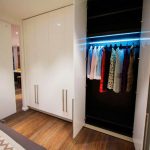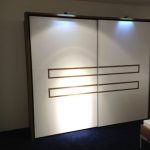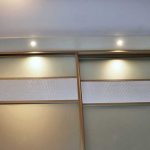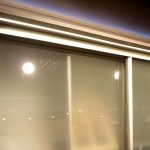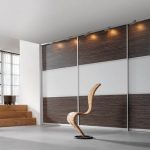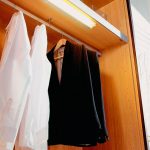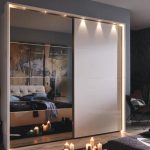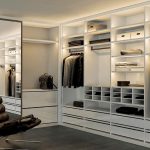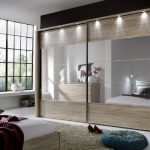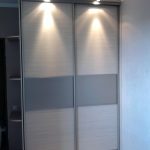How to make a backlight in the closet with your own hands
In the overwhelming majority of sliding wardrobes on the market, additional lighting is not provided. This flaw is easy to fix on your own. Making the lighting inside the cabinet is easier than it might seem at first glance. You don't need to be a professional electrician to do this.

What is the purpose of lighting in the closet
Sliding wardrobes do not have swing doors that block narrow aisles and steal precious space. Unsurprisingly, they are often placed in places with limited space and low light. Additional lighting is also needed with a large cabinet depth, where the light from the ceiling lamp simply does not reach.
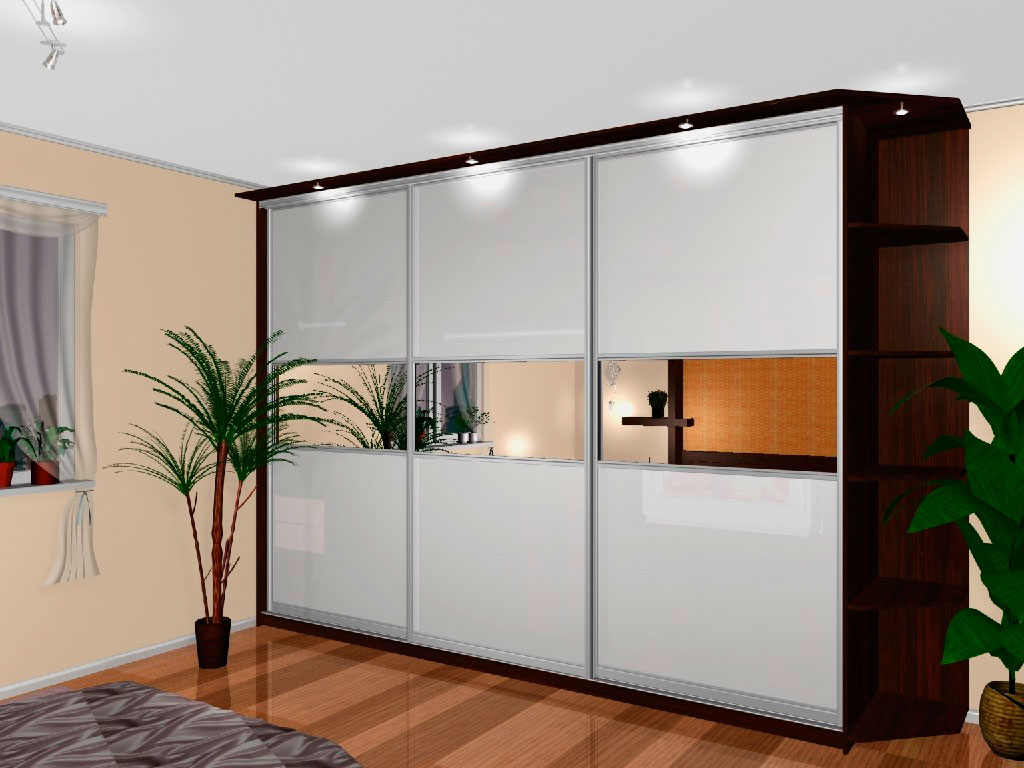
Or maybe you don't want to turn on the lamp again so as not to wake up sleeping family members. Or you need additional lighting in the mirror area, where there is always a lack of lumens. Or the main reason is not functional, but aesthetic. LED strips and built-in lamps visually transform furniture and change the perception of the interior of the entire room.

To understand whether a backlight is needed or not, it is worth deciding on the functions that it can perform:
- Additional illumination of certain areas with insufficient illumination.
- Decorative.
- The ability to illuminate the storage system without turning on the main light sources.
Choosing the lighting of the wardrobe
Classic incandescent lamps with a bi-coil are practically not used in furniture lighting. The main types of lighting: halogen, fluorescent, LED. The latter are in the form of spotlights or LED strips.

Lighting types
Cabinet lighting, main types of lighting:
- Luminescent.
- Halogen.
- LED, including LED strips.

How to choose the right one
As with any other product, health safety is the first thing to consider. A real, and more often a potential threat to the body can be carried by fluorescent and energy-saving lamps. The former contain a small amount of mercury, which theoretically can lead to poisoning, including small doses of vapors in the event of a breach of the tightness of the product. However, the concentration of the harmful substance is so low that the threat should not be taken seriously.

Prolonged exposure to ultraviolet light from fluorescent sources is also unsafe. However, for a cabinet where the need for illumination arises for a short time, this threat is also not relevant. German endocrinologist Wunsch, in an interview with Noah Osnabrücker Zeitung, argued that the stroboscopic effect of fluorescent lighting at 50 Hz can lead to epilepsy. However, over the next ten years, the scientist's assumption was not confirmed by anything.
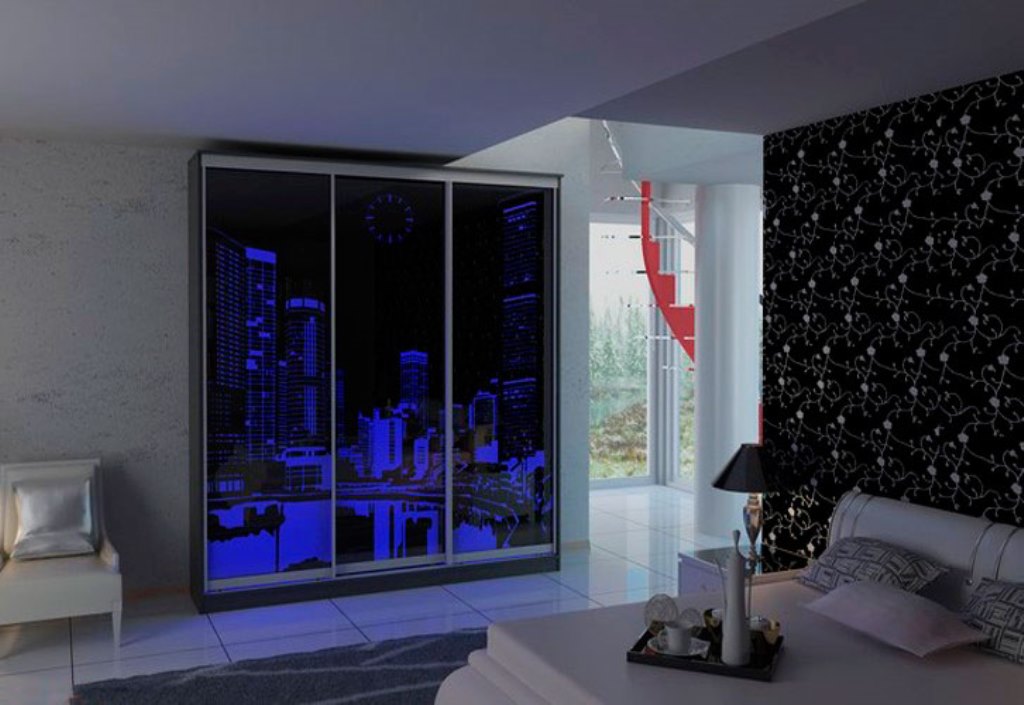
When choosing, it is worth considering the style of the interior, the features of the room, the already existing lighting and the characteristics of the lamps:
- brightness;
- power;
- energy saving opportunities;
- color and design features of the lamp.
Power supplies. Accumulators and batteries need periodic charging and replacement. USB powered LED luminaires are generally not practical to illuminate a cabinet or other furniture. Household light sources may require an additional outlet.

Please note that ready-made lighting kits are available on the market. Including automatic, with motion sensors, and triggered by opening the cabinet door.

Important! The use of a carrier is highly undesirable. If the power is not supplied directly from the mains, but through a 12 or 24 V transformer, the converter should not be located near heaters and open flames.
And the last aspect is the integrity of the walls and cabinet doors. If you have to saw and cut furniture to install the backlight, problems will surely arise during the subsequent replacement of the lamps. With a high degree of probability, you will have to mask the holes ... or buy a new wardrobe.

DIY installation
How to make additional lighting in the closet with your own hands? The easiest way is to mount LED strips. It is not surprising that more than 90% of apartment and private house owners prefer to use this type of lighting in the illumination of cabinets and other furniture.

There are other benefits too:
- energy saving parameters (consume energy 10 times less than classic incandescent lamps and 2 times less than luminescent sources);
- safety ("classics" are easily broken, leaving sharp fragments, fluorescent ones contain mercury vapor, albeit in insignificant quantities);
- "Lifetime" (MTBF reaches 50 thousand hours, fluorescent - up to 7 thousand, incandescent lamps - up to 2 thousand).
- as close to natural light as possible.

Connection method
Most often, lighting devices are connected either directly to a household power supply, or through a 12 or 24 volt power supply. The converter may need to be purchased separately. When planning lighting, it is worth considering the proximity of the outlets so that you do not have to do the wiring at the last moment.
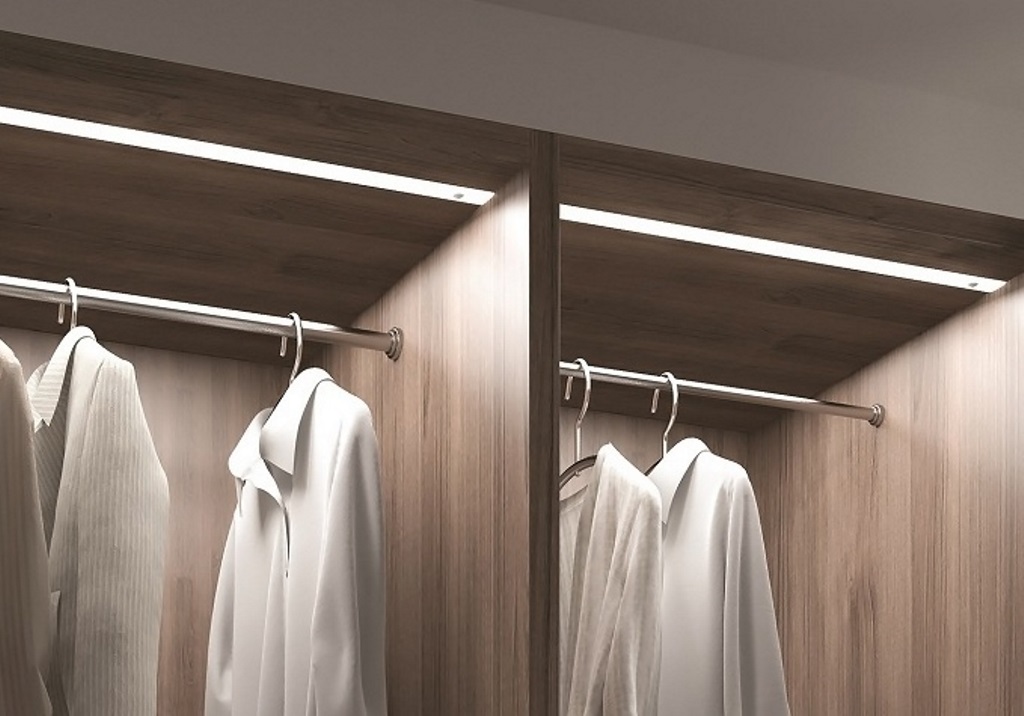
Installation sequence
Consider the stages of installing LED strip, the most popular option for cabinet lighting.
- Determine the location of the tape. When mounting on shelves, it is recommended to mount the tapes from the bottom side. Reduces the likelihood of mechanical damage. Better lighting of the bottom shelf.
- Determine the location of the switch (the bottom of the shelf, the side panel of the compartment, the wall near or behind the cabinet).
- Take measurements. Cut the tape (only in the specially provided places!).
- The tape is installed either by laying it in a plastic box or in a cable channel attached with liquid nails. Self-adhesive tape is also sold. In this case, it is easiest to fix.
- Install switches in predetermined places, connect the tape to the power source, check the operation of the newly mounted backlight.

Light in the closet when opening the door
The lighting system, which is triggered by the opening of the cabinet door, can be made independently. However, it is easier to buy a ready-made kit with motion sensors. The backlight in the closet when the door is opened is a fairly convenient lighting option. You don't have to look for a switch in the semi-darkness again.

Frequent mistakes
- Connecting the LED to a power source without observing polarity. Decide where "+" and where "-", and only then make the connection.
- Using a wire that is too long. Recommended no more than three meters. If it is longer, loss of power is possible.
- Installing the transformer near sources of fire (for example, a fireplace) and heating appliances.
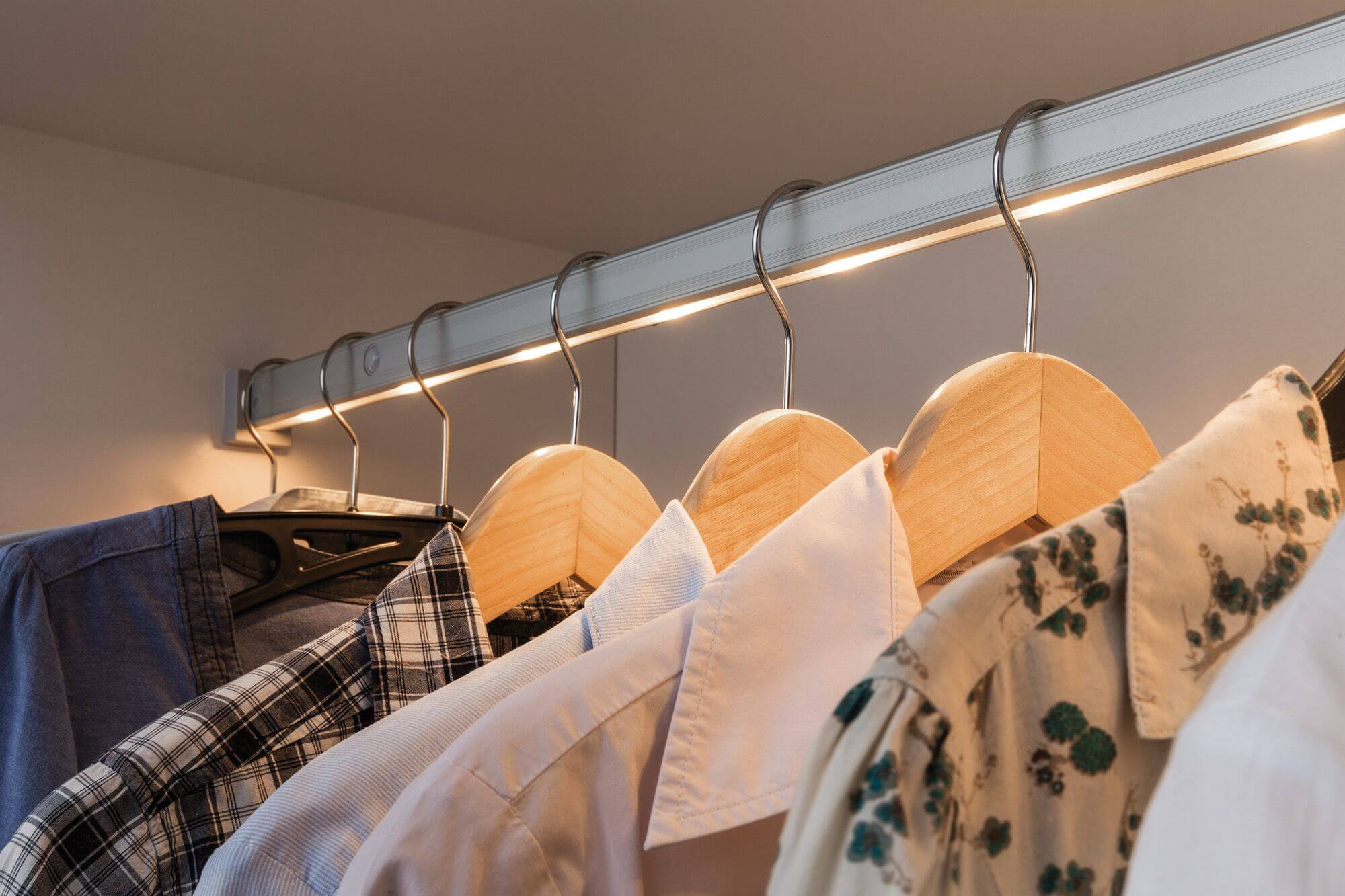
The easiest way is to buy a ready-made cabinet lighting kit. It remains only to determine the location of all elements of the additional lighting system and mount it, based on your preferences.

Video: DIY LED lighting in the closet
